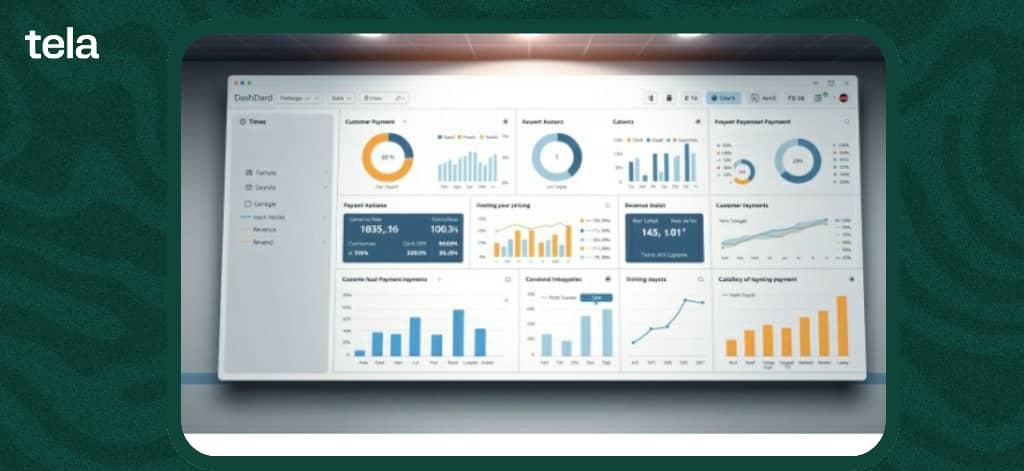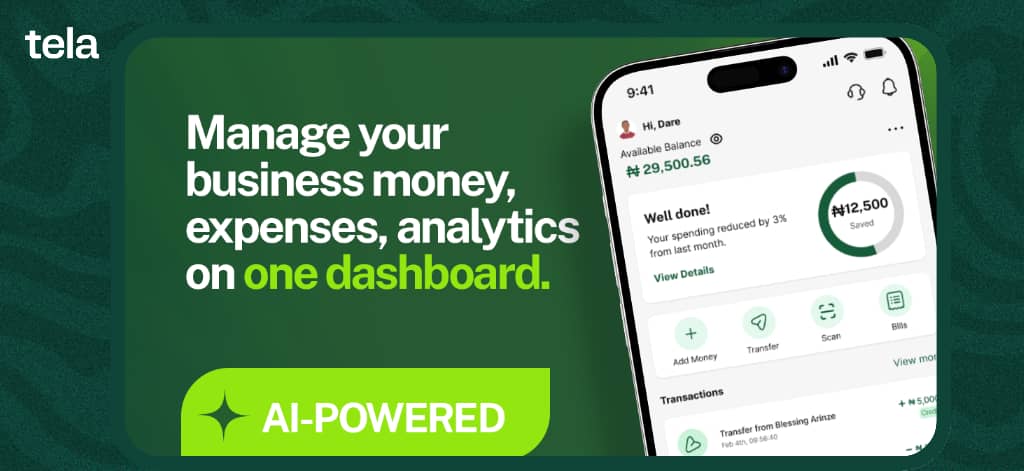The Nigerian market is in turmoil with every segment of the economy feeling the impact. The cost of goods has now skyrocketed to alarming levels and daily expenses continue to climb and what's the main word on everyone's lips? Inflation.
Inflation is usually defined as the persistent increase in the general price level of goods and services in an economy over a period of time. But in Nigeria? It’s not over a period of time.it’s every single day. Energy costs shot up by 28% after fuel subsidy reforms.
And now, the naira has recorded its steepest depreciation in recent weeks, falling by ₦21.28 in a single day to trade at ₦1,552.53 per dollar (Daily Post).
This sharp drop in exchange rates is driving up import costs across all sectors. Data costs have also increased making it even harder for businesses to stay online in today's digital economy.

As a business owner looking to grow,
- How can you adjust pricing?
- How do you cope with continual increments in daily operational costs?
A BusinessDay analysis revealed that Nigeria’s consumer goods firms are in urgent need of a turnaround in sourcing raw materials, as rising prices for production inputs have pushed input costs to high records BusinessDay
Your products can increase in price today, and just when you think prices will stabilize, they increase again by the next market day. As a business owner, strategic pricing has never been more critical.
How To Adjust Your Pricing Pricing Strategies Amidst Inflation.
1. Identifying Cost Drivers

Keep track of every expense related to your product or service. Ask yourself: What materials, labor, or logistics cost the most? Here's a list:
- Raw material costs
- Production labor hours
- Transportation fees
- Utility bills
Find out which costs are going up the most. Knowing this helps you make smart price adjustment choices without cutting corners on quality.
2. Monitor Your Competitors’s Price

Compare your prices to others with a simple table: Competitor, Product , Your Price vs. Theirs
Look for price gaps. If you're cheaper, highlight your value. If you're more expensive, explain why through quality or service. Use these findings to adjust prices slowly. Start with small changes, then expand based on customer feedback.
Key Factors to Consider When Adjusting Prices
Before you change your prices, do a detailed cost analysis to know your costs and how inflation affects your profits.
● Cost Analysis Basics: Look at all costs, from raw materials to labor. If you ignore rising inflation, it could cut into your profits.
● Market Positioning: Are your competitors changing their prices? Keep an eye on them to stay competitive without losing money.
● Customer Perception: Raising prices might upset customers. Use surveys or small tests to see how they react.
● Regulatory Shifts: Keep up with Nigerian economic policies. New taxes or subsidies could change how you price things.
Do a cost analysis to find out when you break even. Compare your prices with 3-5 direct competitors. Check what customers think about the value for money. Consider government economic rules.
Pricing isn't a one-time thing. You need to keep checking and adjusting.
3. Use Financial Metrics for Price Setting

Use these metrics to set prices that match competitive pricing:
Track these numbers weekly. If COGS rises, adjust prices wisely without losing customers. Small price changes can make a big difference. Keep your suppliers and customers informed to build trust and protect profit margins.
4.Leverage Data For Price Changes

Financial data is your best ally when updating prices during Nigeria's inflation. Use sales trends, customer feedback, and market research to spot opportunities. Tracking how often customers choose different payment options can reveal spending habits. This helps you set prices that match their preferences. For example:
- Sales volume and timing
- Customer complaints or praises about pricing
- Competitor pricing shifts
Organize this data into clear insights. For instance:
● Payment Option Popularity: Identify which methods customers use most. This helps you adjust pricing tiers to fit their habits.
● Price Elasticity: Understand how demand changes with price shifts. Avoid losing sales by testing small adjustments.
Tools like TELA and QuickBooks simplify tracking. Use this information to test new prices in small batches. Monitor how customers respond—especially to payment options linked to price changes—and adjust quickly based on real results.
5. Communicate Price Adjustment

Clear price communication is important when telling customers about price changes. How you share the news is as important as the change itself. Your aim is to keep trust while explaining the need for adjustments. Being open builds loyalty, so always be honest in your messages.
Use these effective messaging tactics:
- Begin with clear language.
- Be open about why prices are changing, like cost hikes or market shifts.
- Choose the right time to announce, avoid busy sales periods.
- Use various channels to reach everyone: emails, social media, and in-store signs.
Engaging with Customers on Price Changes — How?
- Listen to their thoughts through surveys or reviews.
- Respond quickly to concerns through feedback loops.
- Thank loyal customers with special programs to show appreciation.
Price communication is more than just telling. It's about building relationships. Keep messages upbeat and focus on benefits for both sides. When customers feel valued, they're more likely to accept changes.
6. Adopting Flexible Payment Options Amid Inflation

During times of inflation, offering different ways for customers to pay can help keep them loyal and support your business.
By providing flexible payment methods, such as installment plans or various payment platforms, you make it easier for customers to buy from you, even when prices are higher.
This approach keeps the money flowing into your business while also showing that you understand and adapt to your customers' needs. It’s a win-win: customers feel more comfortable, and your business can stay profitable.
How Tela Supports Smarter Pricing Decisions

Tela Solutions helps you make confident pricing decisions using data and actionable insights. Here’s how:
1. Financial Insights: Tela shows how much you're earning, spending, and profiting instantly. This helps you see whether your current prices are sustainable or need adjustment.
2. Product Performance Breakdown: Not all products perform the same. Tela highlights which items sell best and which ones underperform, so you can price based on what the market values.
3. Customer Behavior Analytics: By analyzing buying patterns, Tela helps you understand what your customers are willing to pay so you’re not leaving money on the table or scaring them away with high prices.
4. Trend-Based Recommendations: Tela's AI-powered solutions spot pricing trends across time, like seasonal shifts or competitor undercuts, so you can stay ahead, not reactive.
5. Profit Margin Calculators: Know your margins before you even set a price. Tela factors in costs, taxes, and fees to show what’s truly profitable.
Conclusion
To adjust your pricing strategy in Nigeria's inflation, you need to understand your costs, what customers want, and market trends. By looking at your costs and using financial tools, you can set prices that reflect the rising costs. This way, you stay competitive.